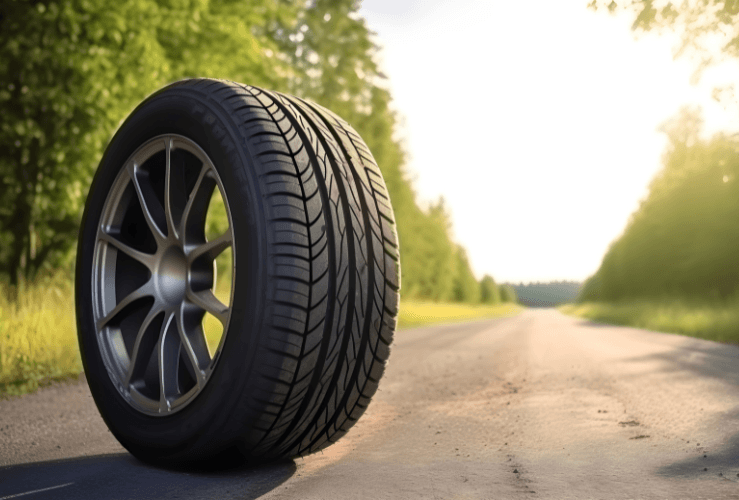While you are legally permitted to use winter tyres in summer, you might experience negative effects on braking distance, handling, wear-and-tear and fuel efficiency.
If you invested in a set of winter tyres for the colder seasons, you may be wondering: should I replace them with summer tyres? Is it safe to use winter tyres in summer?

Braking distances: winter tyres in summer
Well maintained tyres are essential to perform an emergency brake promptly and safely. This is arguably the most important role of your vehicle's tyres, since it could help avoid a collision - and any injuries that might result.
So what are the dangers of using winter tyres in summer?
Tests have shown that a car with winter tyres will take longer to stop than one with summer versions.
According to Continental Tyres, driving on winter tyres during summer "increases the braking distance by at least 10 per cent on dry tarmac and 26 per cent on wet tarmac."
A real-world test by YouTube's Amateur Torque found similar increases when comparing braking distances of winter and summer tyres in July. This test was carried out in 19C in the UK, so is more relevant to British motorists.
While the Amateur Torque test was not carried out under precise laboratory conditions, it does suggest that stopping distances with winter tyres increased generally, particularly at 30 mph and 60 mph, where braking distances increased around 13% compared to summer tyres.
Is it legal to use winter tyres in summer?
There are no UK laws governing whether or not you can use winter tyres in summer.
In the UK, the key rule is that tyres must have a tread depth of 1.6mm across the central three quarters.
When the rubber is worn down to the tread wear indicators, the tyre must be replaced.
Other disadvantages of winter tyres in summer
- Reduced performance: Winter tyres are designed to offer better grip in colder, wetter conditions. Summer temperatures can soften the rubber compound used in winter tyres, potentially reducing performance, handling, and of course braking distances.
- Increased wear: The warmer road surfaces of summer can accelerate wear on winter tyres.
- Poorer fuel efficiency: Winter tyres have deeper, more 'aggressive' tread patterns, which increase rolling resistance and therefore fuel consumption. From an environmentally friendly viewpoint, it might make sense to buy summer tyres - however, by purchasing new tyres you would also be contributing to CO2!
- Handling and stability issues: Winter tyres have deeper grooves which improve grip in snow and ice, but when used in summer conditions these threads may reduce handling and stability - and may increase the chances of aquaplaning on wet roads.

Should I switch to summer tyres?
Buying new tyres for the warmer weather is costly and time consuming, and given the UK’s unpredictable weather, might not appear to be worthwhile.
Additionally, those who live in wetter, cooler parts of the country may benefit from having winter tyres year-round, since they may offer benefits when driving in wet weather.
Further, higher temperatures are not the norm in the UK, so if you had to choose one of these two tyre types for the entire year, a set of winter tyres might make more sense.
What about all-season tyres?
In a mild-weather country such as ours, it could make sense to buy all-season tyres - offering a good middle-ground alternative to either winter or summer tyres.
While features vary, many all-season tyres have treads that help channel water away from the contact area, reducing the risk of aquaplaning.
Maintaining your tyres
Whichever tyre type you have on your vehicle, it is critical to ensure they are in good condition:
- Check tyre pressure every month and before long trips: Under- or over-inflated tyres can reduce handling and performance. They can also impact fuel efficiency.
- Rotate your tyres: This helps ensure even wear across all four tyres. Your front tyres will receive more wear than the rear ones. As a rule of thumb, aim to rotate your tyres every 5,000 to 7,500 miles.
- Check wheel alignment: Poorly aligned wheels can reduce handling and increase fuel efficiency.
- Check tread depth: Tread depth must be maintained so you have optimum traction on the road.
- Check tyres for cuts and bulges
- Avoid overloading: This could accelerate wear and lead to tyre failure.
- Drive responsibly: Hard braking and sudden acceleration can wear your tyres out faster (and reduce your safety on the road).




